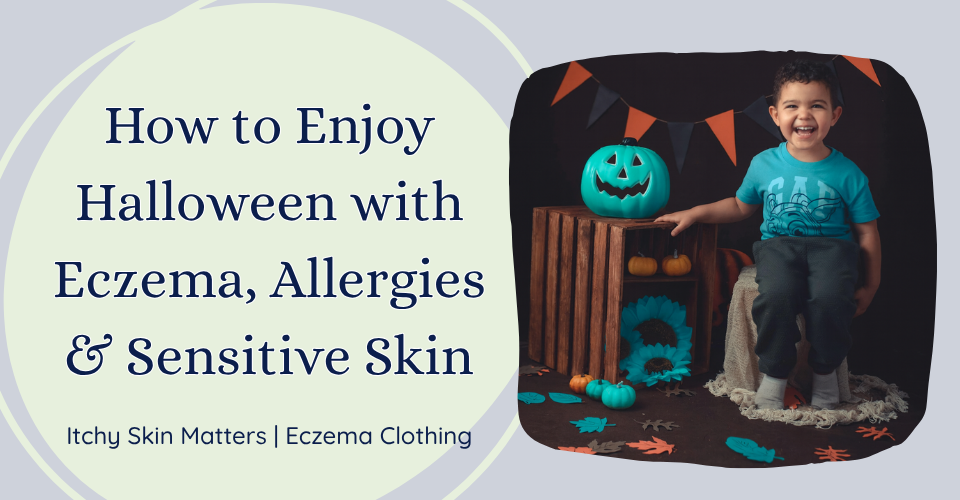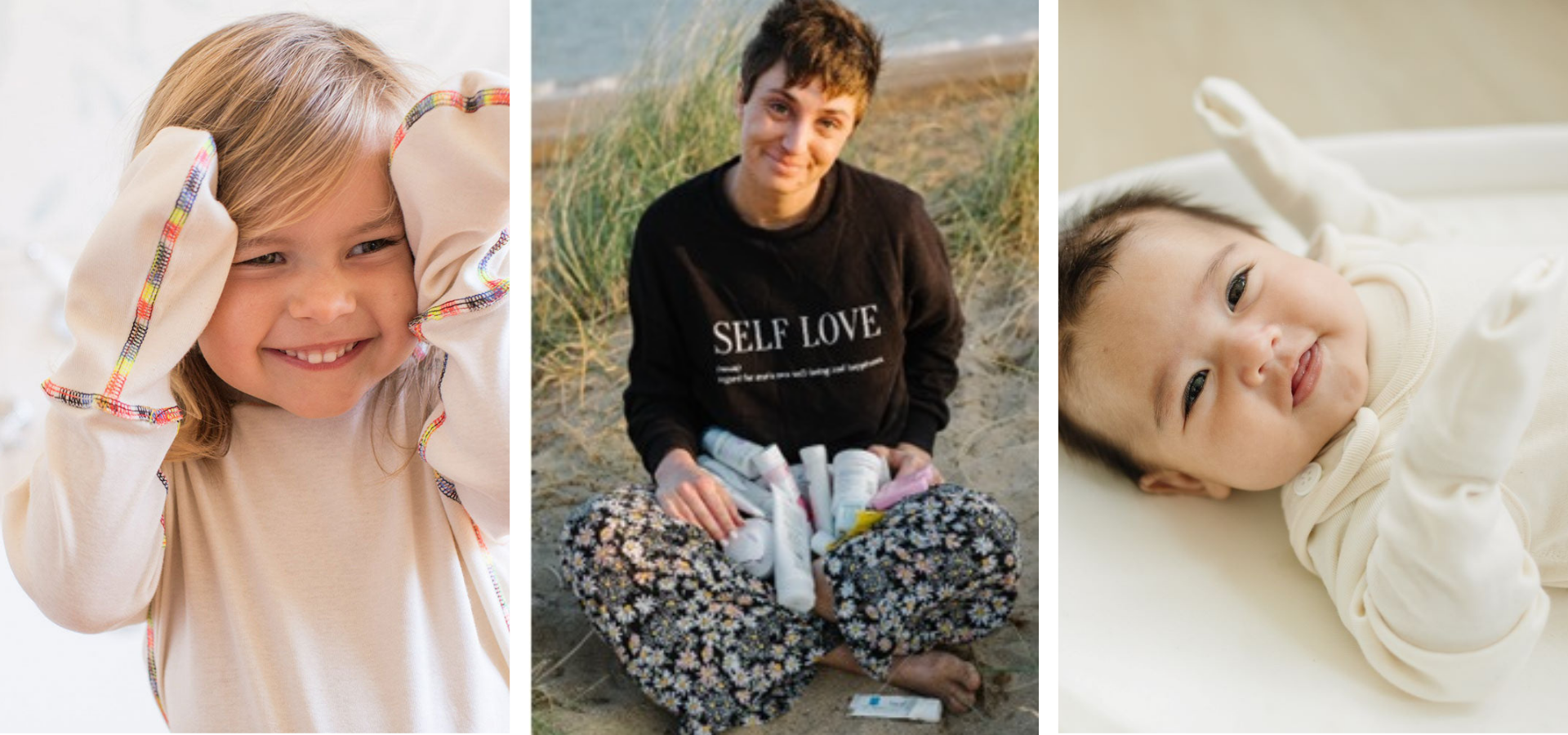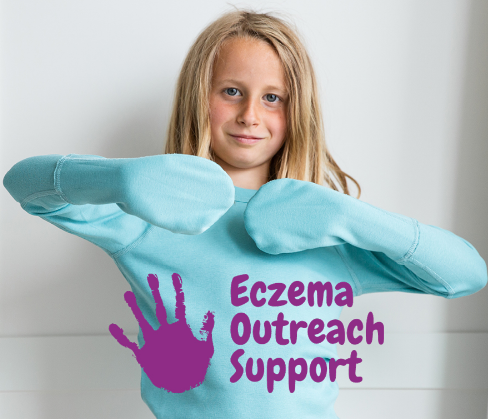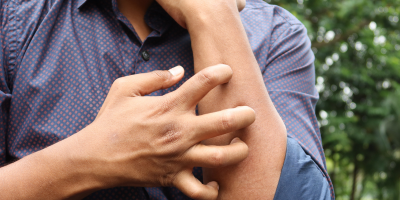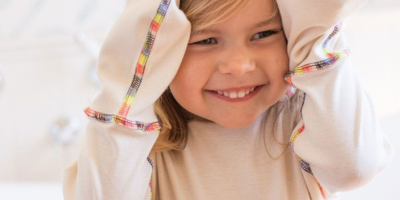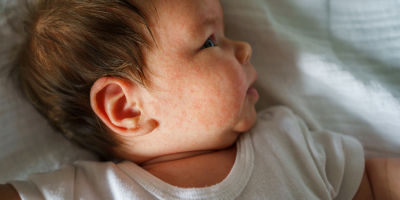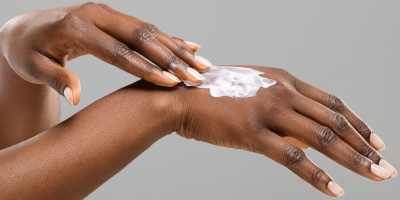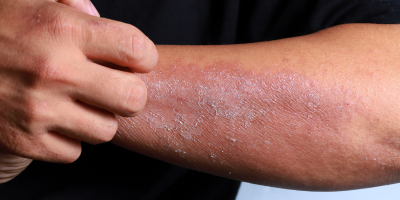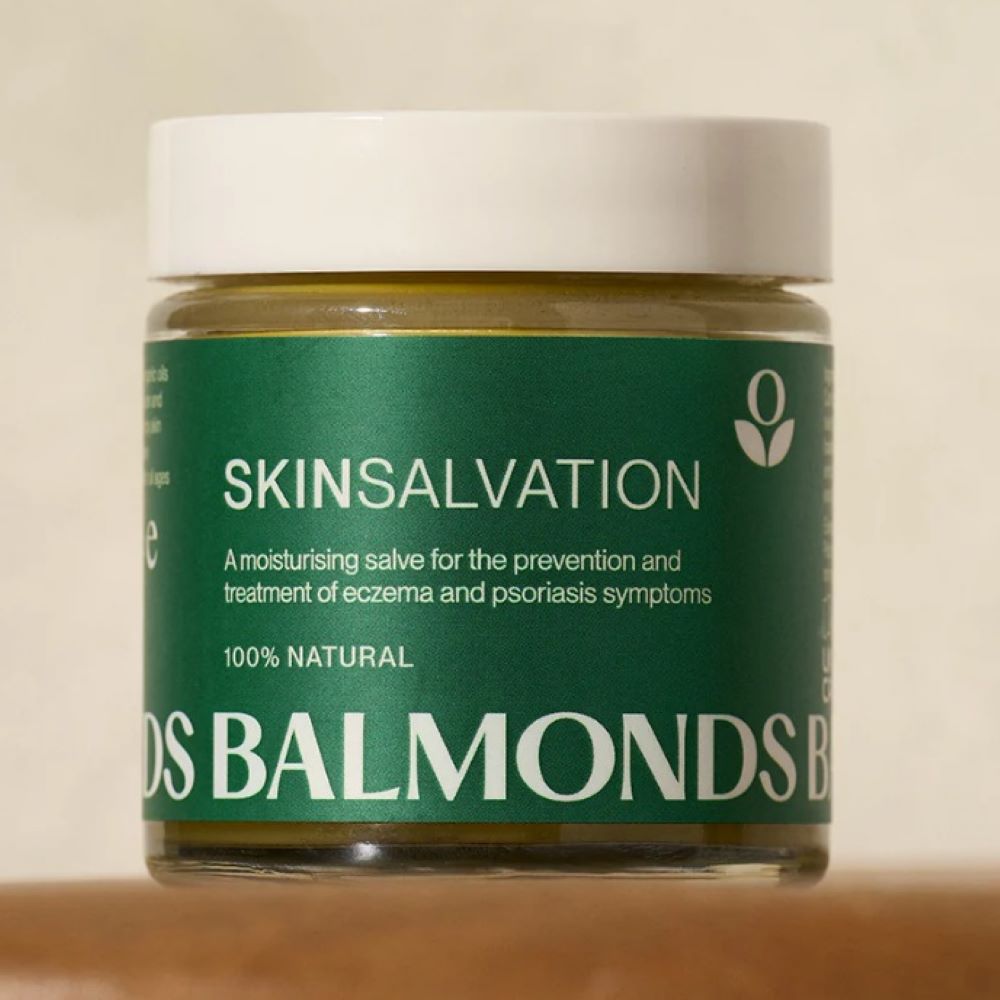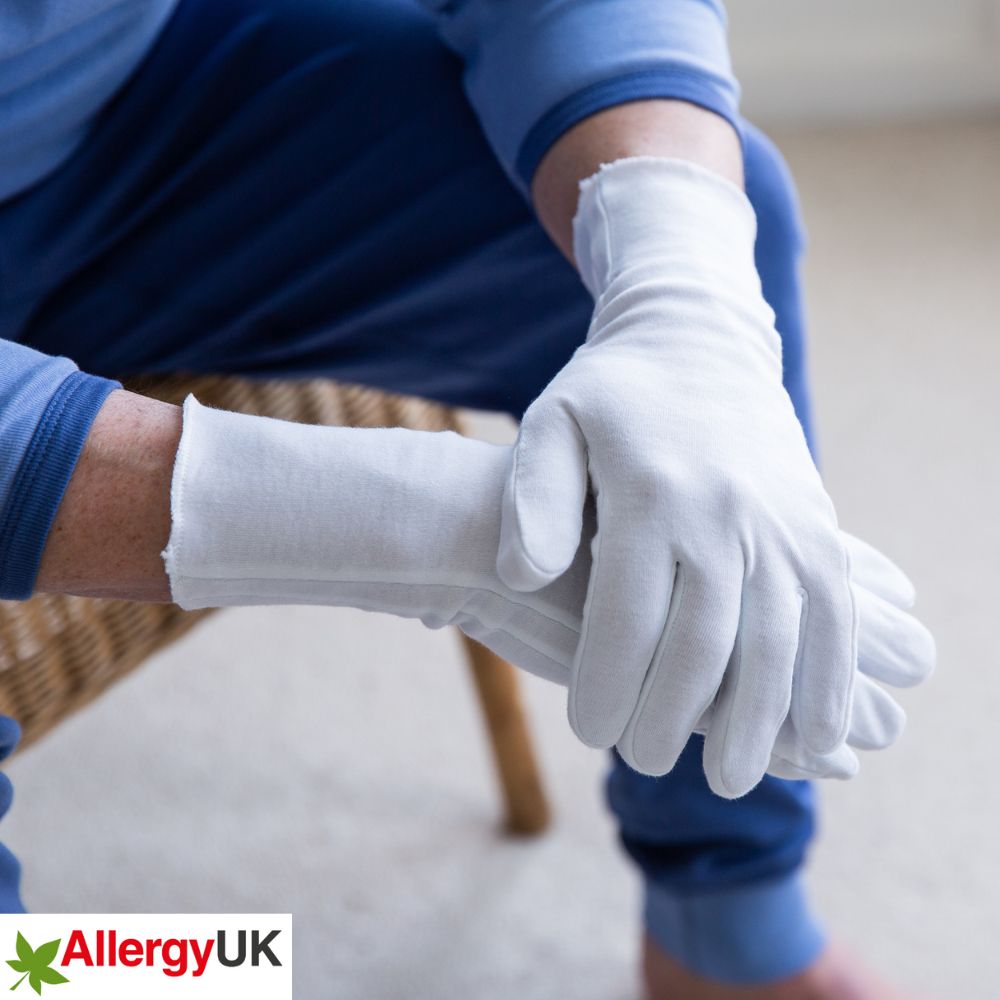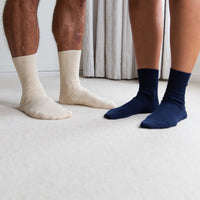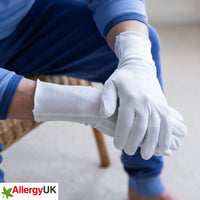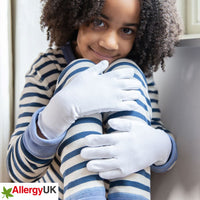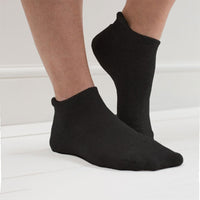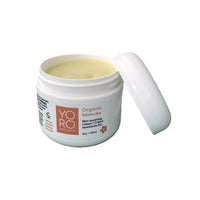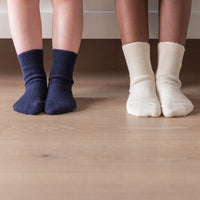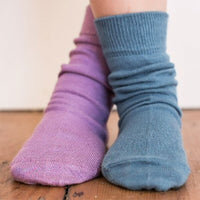Halloween Doesn't Have to Be Scary for Sensitive Skin
For families managing eczema, allergies, or skin sensitivities, Halloween can feel like navigating a minefield of potential triggers. Between scratchy costumes, questionable face paints, allergen-laden sweets, and chilly October weather, it's natural to worry about flare-ups ruining the fun.
But here's the good news: with a little planning and the right strategies, your child can enjoy every magical moment of Halloween without compromising their skin health. This guide will walk you through practical, parent-tested tips to make this Halloween both safe and memorable for your sensitive-skinned little one.
Common Halloween Triggers for Sensitive Children
Understanding what causes reactions is the first step to preventing them. Here are the most common Halloween culprits:
-Costume fabrics: Synthetic materials like polyester, nylon, and acrylic can trap heat and moisture, causing irritation and itching
-Tags, seams, and embellishments: Rough edges, scratchy labels, and decorative elements can create friction points
-Face paints and makeup: Many contain fragrances, preservatives, artificial dyes, and allergens like nickel or latex
-Latex masks or props: Latex allergies are common and can cause contact dermatitis or respiratory issues
-Sweat and friction from layers: Overheating under multiple costume layers creates the perfect storm for eczema flare-ups
-Sweet ingredients: Common allergens include nuts, dairy, soya, eggs, wheat, and artificial food colourings
-Cold, dry air: October weather can strip moisture from sensitive skin, triggering irritation
-Handwashing and sanitisers: Frequent hand cleaning (especially important when handling treats) can dry out delicate skin
Costume Tips for Children with Eczema or Allergies
The costume is the centrepiece of Halloween, but it doesn't have to be a source of discomfort. Here's how to choose and modify costumes for sensitive skin:
Use Cotton or Bamboo Base Layers
Always dress your child in soft, breathable base layers before putting on their costume.
100% cotton acts as a protective barrier between their skin and potentially irritating costume materials. Long-sleeved tops and leggings work perfectly.
Choose Natural, Breathable Fabrics
When possible, opt for costumes made from natural fibres. Cotton, muslin, and soft jersey are gentle on skin. If you're crafting a DIY costume, you have complete control over material selection.
Remove All Tags and Labels
Before your child wears the costume, cut out every tag and label. Use a seam ripper to remove them completely rather than just cutting them short, which can leave scratchy remnants.
Opt for Seamless Accessories
Look for seamless garments, soft socks without elastic tops, and smooth headbands. Avoid accessories with elastic bands that dig into skin or create pressure points.
Skip the Mask & Use Soft Alternatives
Instead of latex or plastic masks that trap heat and moisture against the face, try soft hats, headbands with attached features, or gentle face-framing accessories. A crown, animal ears, or character hat can complete the look without touching sensitive facial skin.
Check for Hidden Allergens
Inspect costumes for potential allergens:
-Nickel in buttons, zips, or press studs
-Rubber or latex in elastic bands
-Adhesives in iron-on patches
-Chemical treatments or flame retardants
Pre-Wash Everything
Wash new costumes before wearing them to remove manufacturing chemicals, dyes, and sizing agents. Use a fragrance-free, hypoallergenic detergent and double rinse.
Safe Costume Checklist
| Category | What to Do | Why It Matters |
|---|---|---|
| Base Layer | Wear 100% organic cotton | Creates barrier against irritating fabrics |
| Fabric Choice | Select natural, breathable materials | Reduces heat, sweat, and friction |
| Tags & Labels | Remove completely before wearing | Eliminates scratchy irritants |
| Masks | Use soft hats or headbands instead | Prevents facial irritation and overheating |
| Accessories | Choose seamless, soft options | Minimises pressure points and rubbing |
| Hardware | Check for nickel, latex, rubber | Avoids common contact allergens |
| Pre-Treatment | Wash costume in gentle detergent | Removes chemical residues |
| Fit | Ensure loose, comfortable sizing | Prevents friction and allows air circulation |
Choosing Safe Face Paints & Makeup
Face painting is a Halloween staple, but it can be problematic for sensitive skin. Here's how to do it safely:
Always Patch Test First
At least 48 hours before Halloween, apply a small amount of any face paint or makeup to your child's inner forearm. Cover with a plaster and check for redness, itching, or swelling. This simple test can prevent a full-face reaction on the big night.
Choose Hypoallergenic and Natural Brands
Look for face paints specifically labelled hypoallergenic, dermatologist-tested, or formulated for sensitive skin. Water-based options are generally gentler than oil-based products. Read ingredient lists carefully and avoid products with long lists of chemical names you don't recognise.
Avoid These Common Irritants
Steer clear of face paints containing:
-Fragrances (even "natural" scents)
-Parabens (preservatives)
-Formaldehyde and formaldehyde-releasing agents
-Glitter (can scratch and irritate)
-Heavy metals
-Artificial dyes like FD&C or D&C colourants
Keep It Minimal
Less is more with sensitive skin. Instead of full-face coverage, consider simple designs on areas less prone to eczema—perhaps a small star on the cheek or a tiny nose dot. The less product you use, the lower the risk of reaction.
Apply a Barrier First
Before applying face paint, consider using a thin layer of your child's regular moisturiser or a barrier cream as a protective base. This creates a buffer between the paint and their skin.
Remove Immediately After
Don't let face paint sit on skin any longer than necessary. As soon as the festivities wind down, gently remove all makeup with a mild, fragrance-free cleanser or micellar water. Follow with your child's usual moisturiser to restore the skin barrier.
Consider Alternatives
If face paint seems too risky, try temporary tattoos designed for sensitive skin, stick-on jewels (avoiding adhesive on irritated areas), or no makeup at all—sometimes the best costume is makeup-free.
Sweet & Treat Safety: Allergy-Friendly Alternatives
Managing food allergies whilst trick-or-treating requires vigilance, but it doesn't mean your child has to miss out on the sweet side of Halloween.
How to Spot Allergens
Teach your child (if age-appropriate) and yourself to identify common allergens on sweet labels:
-Nuts and tree nuts: Often hidden in chocolate bars, nougats, and pralines
-Dairy: Milk, whey, casein, and butter appear in most chocolate sweets
-Soya: Soya lecithin is a common emulsifier in chocolate
-Wheat/gluten: Found in biscuits, wafer bars, and some liquorice
-Eggs: Present in some marshmallow treats and nougats
-Artificial colourings: May trigger reactions in sensitive children
Always read labels carefully. Manufacturers can change recipes, so even familiar brands need checking.
Allergy-Friendly Sweet Brands
These brands offer allergen-free options (always verify current formulations):
-Enjoy Life: Free from top 14 allergens
-YumEarth: Organic, free from major allergens, no artificial colourings
-Free2b: Specialises in nut-free, dairy-free chocolate alternatives
-Surf Sweets: Organic gummy sweets without common allergens
-Unreal: Chocolate sweets with simpler ingredient lists
-Skittles and Starburst: Many varieties are free from major allergens (check labels)
The Teal Pumpkin Project
Consider participating in or seeking out homes displaying teal pumpkins, which signal that non-food treats are available. Non-food alternatives include:
- Glow sticks and bracelets
- Stickers and temporary tattoos
- Small toys or figurines
- Pencils, rubbers, or small notepads
- Bouncy balls
- Bubbles
- Halloween-themed bookmarks
Create a Sweet Swap System
Set up a "trade-in" system at home where your child can exchange unsafe sweets for pre-approved alternatives. This way, they don't feel deprived when they have to skip certain treats.
Handle Treats with Care
If your child has contact skin reactions, have them wear soft cotton gloves whilst trick-or-treating to avoid touching allergens that might transfer to their skin. Wash hands thoroughly after handling sweets and before touching their face.
Managing Cold Weather & Skin Care on Halloween Night
October evenings can be harsh on sensitive skin. Here's how to protect against the elements:
Moisturise Before Heading Out
Apply a thick layer of your child's regular emollient or ointment 15-20 minutes before getting dressed. Focus on areas prone to dryness like hands, face, and any eczema-prone spots. This creates a protective barrier against cold, dry air.
Layer Smart, Not Tight
Dress in loose, breathable layers rather than one heavy item. This allows you to adjust if your child gets too warm. Remember, overheating and sweating can trigger eczema just as much as cold can.
Protect Exposed Skin
Apply a petroleum-based barrier balm to any exposed areas, especially cheeks, nose, and hands. This creates a shield against wind and cold.
Keep Gloves Handy
Bring soft, cotton gloves. Cold air can trigger hand eczema, and frequent hand washing whilst out can dry skin quickly.
Pack an Emergency Kit
Carry a small bag with:
- Travel-size emollient or ointment
- Soft tissues or wipes (fragrance-free)
- Antihistamine (if recommended by your GP)
- Any prescribed medication
- Soft cotton cloth for gentle dabbing
Limit Time Outdoors
Set reasonable expectations about how long your child will be out in the cold. Two houses might be enough for a very young child, whilst older children might manage 45-60 minutes. Watch for signs of discomfort and don't push it.
Post-Halloween Skincare Routine
The fun doesn't end when you get home, but proper aftercare is crucial to prevent delayed reactions or flare-ups.
Quick Rinse First
Give your child a quick, lukewarm shower or bath to remove sweat, face paint residue, and any environmental irritants picked up during the evening. Use gentle, fragrance-free cleansers and avoid scrubbing.
Pat, Don't Rub
Gently pat skin dry with a soft towel. Rubbing can irritate already-stressed skin.
Apply Moisturiser Immediately
Within three minutes of bathing (whilst skin is still slightly damp), apply a generous layer of moisturiser or prescribed ointment all over. This "soak and seal" method locks in hydration.
Use Prescribed Treatments
If your child has prescription creams or ointments for eczema, apply them as directed by your dermatologist, especially to any areas that look irritated.
Monitor for Reactions
Keep an eye out for delayed allergic reactions over the next 24-48 hours. Contact dermatitis from costume materials or face paint can sometimes appear hours after exposure. Watch for:
- New redness or rashes
- Increased itching
- Swelling
- Blistering
Wash Costume Components
Before storing or wearing again, wash all costume pieces that touched skin. This removes sweat, skin cells, and any irritants accumulated during wear.
Frequently Asked Questions
Can my child with eczema wear Halloween makeup?
Yes, with precautions. Choose hypoallergenic, fragrance-free face paints and always patch test 48 hours before use. Apply a thin moisturiser barrier first, keep designs minimal, and remove makeup immediately after the event. For severe eczema, consider makeup-free costume alternatives or temporary tattoos designed for sensitive skin.
What are the best costume materials for sensitive skin?
Natural, breathable fabrics work best: 100% cotton, bamboo, muslin, or soft jersey. Always use cotton or bamboo underlayers beneath any costume, regardless of its material. Avoid synthetics like polyester and nylon, which trap heat and moisture. Remove all tags and labels before wearing, and pre-wash costumes in fragrance-free detergent to remove chemical treatments.
Are there safe Halloween sweets for nut allergies?
Yes, several brands specialise in allergen-free sweets. Look for Enjoy Life (free from top 14 allergens), YumEarth (organic, free from major allergens), and Free2b (nut-free, dairy-free alternatives). Always read current labels, as manufacturers can change formulas. Consider participating in the Teal Pumpkin Project for non-food treats, and create a sweet swap system at home for safer alternatives.
What should I do if my child has a flare-up on Halloween night?
Stay calm and take immediate action: remove any irritating costume pieces or face paint, gently rinse affected areas with lukewarm water, pat dry, and apply your child's regular moisturiser or prescribed medication. If you're away from home, use your emergency kit. If the reaction is severe (difficulty breathing, swelling of face or throat, widespread hives), seek immediate medical attention. For mild flare-ups, continue your regular skincare routine and monitor closely over the next few days.
Final Thoughts: Halloween Success for Sensitive Skin Families
Halloween with eczema, allergies, or sensitive skin requires extra planning, but it doesn't require missing out. By preparing thoughtfully, choosing the right materials, and having a solid skincare plan, your child can create wonderful Halloween memories without the worry of flare-ups or reactions.
Remember, every child is different. What works perfectly for one might not suit another, so don't be afraid to adapt these tips to your family's specific needs. Trust your instincts, communicate with your child about what feels comfortable, and don't hesitate to reach out to your dermatologist or allergist with questions.
With the strategies in this guide, you're equipped to make this Halloween safe, comfortable, and genuinely fun for your sensitive-skinned little ghoul or goblin.
Happy Halloween!
Sources and Further Reading
- National Eczema Society
- Allergy UK
- Teal Pumpkin Project
- British Association of Dermatologists: Contact Dermatitis Resources
Disclaimer: This article is for informational purposes only and does not replace professional medical advice. Always consult with your child's GP, dermatologist, or allergist for personalised guidance regarding eczema, allergies, and skin sensitivities.

